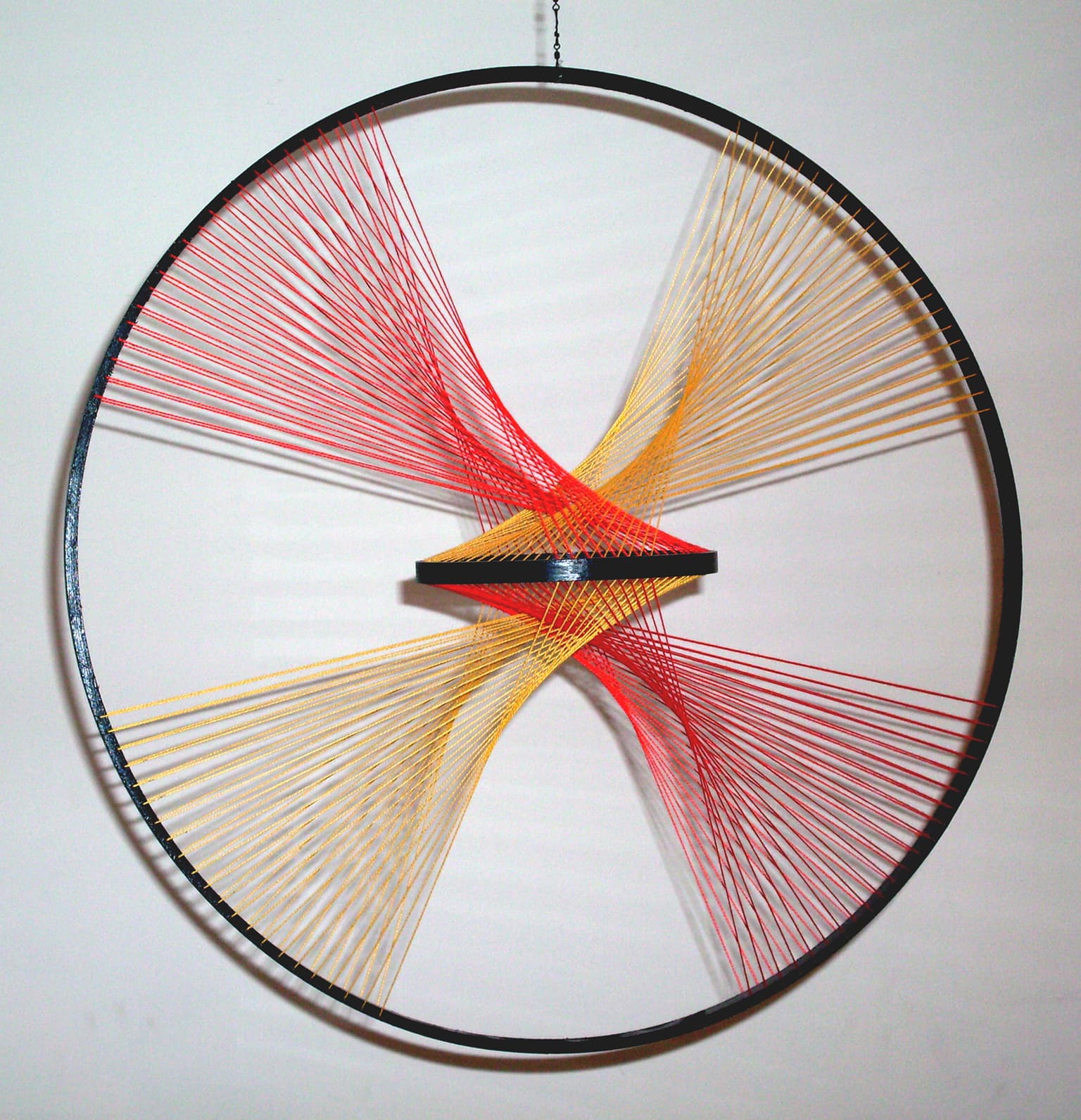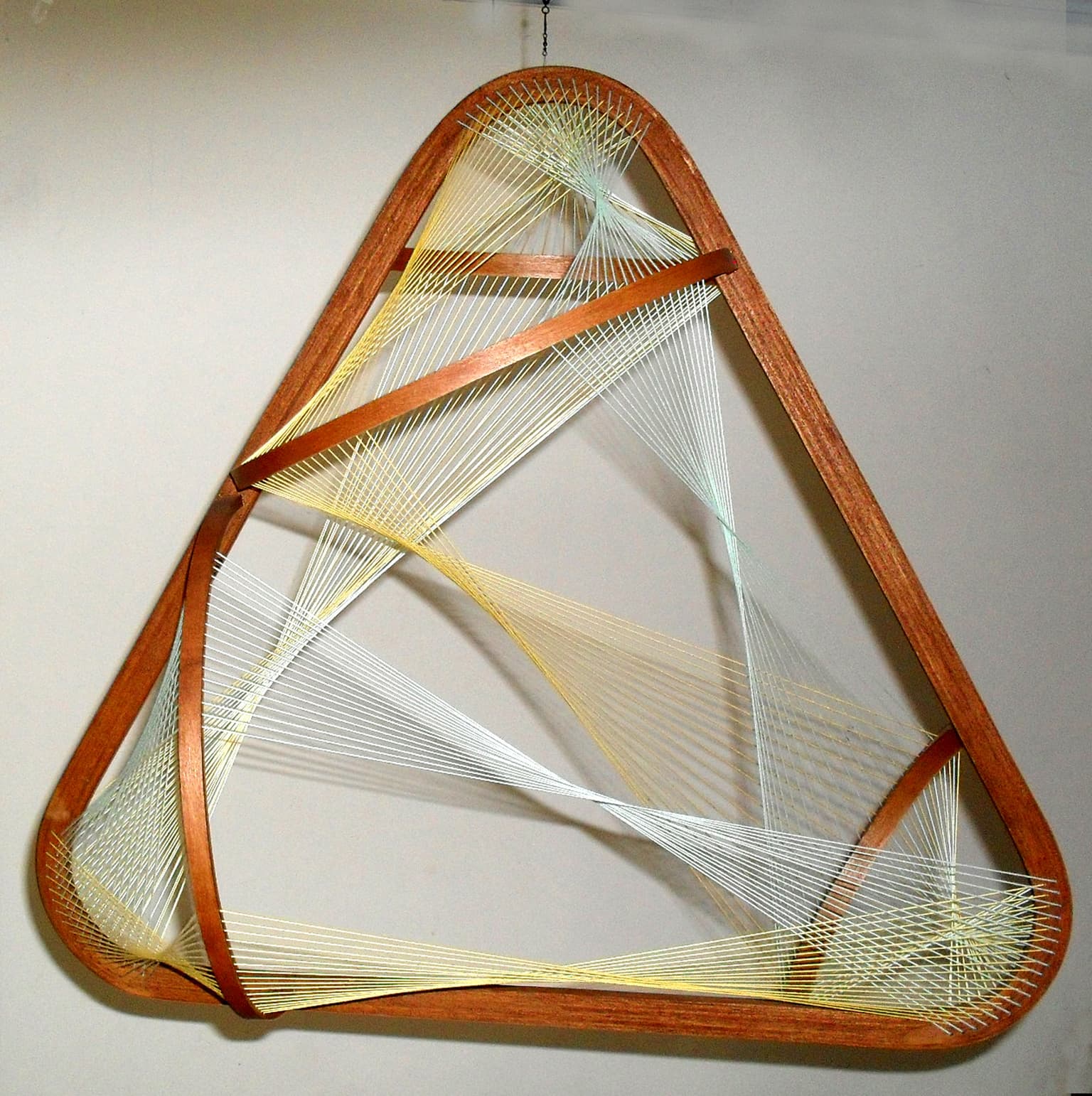David H Press
Artists
David H. Press
Artist & retired math and computer teacher
Blind Brook Middle School
Rye Brook, NY, USA
Statement
I am dedicated to fully exploring the possibilities of three dimensional shapes formed from straight lines. Symmetry makes it easier to suspend a part in midair as the forces on the part pull it in all directions equally. My recent work explores more assymetrical forms and the incorporation of more empty space as part of the definition of the shape of the piece. I’ve also concentrated on the creation of shapes that appear to float in space. For inspiration I draw on the work of four people. Foremost is 19th century mathematician and model maker Theodore Olivier whose string sculptures over 150 years ago were beautiful representations of mathematical shapes. The others are artists Naum Gabo, Alexander Calder, and Kenneth Snelson. Gabo provides a constructivist vision, Calder a focus on color, lightness and movement, and Snelson an understanding of tensegrity. The pieces in this show are representative of my most recent work.
Artworks

Red and Yellow Phoenix
23 by 23 by 7 inches
cotton and laminated wood
2012

Triangle with Offset Half Circles
23 by 21 by 11 inches
cotton and laminated wood
2012

Oval and Split Raceway
24 by 17.5 by 19.5 inches
cotton, bent wood and laminated wood
2012